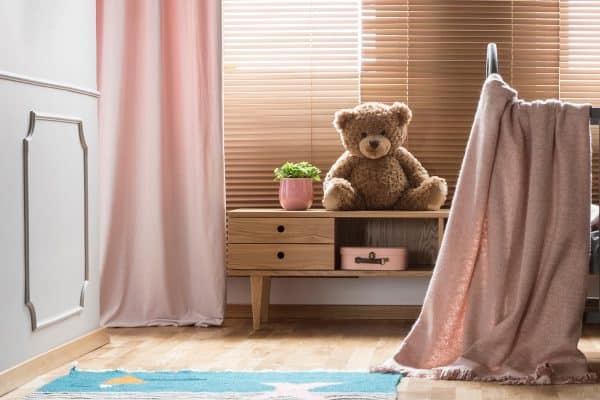One way to create a comfortable environment in your home is to maintain a constant temperature. Curtains can help lessen your reliance on your HVAC units and keep costs down. But if you're wondering which curtains to choose for insulation, you're in the right place! We've done our research to help you with the answer.
The best curtains to insulate your home include:
- Wool curtains
- Polyester curtains
- Velvet curtains
- Thermal curtains
All these listed curtains are generally great at insulating a house. However, not all curtains are made the same, all of these materials have their own pros and cons and even specific uses. Keep reading to learn more about what type of curtain is best for your home environment.
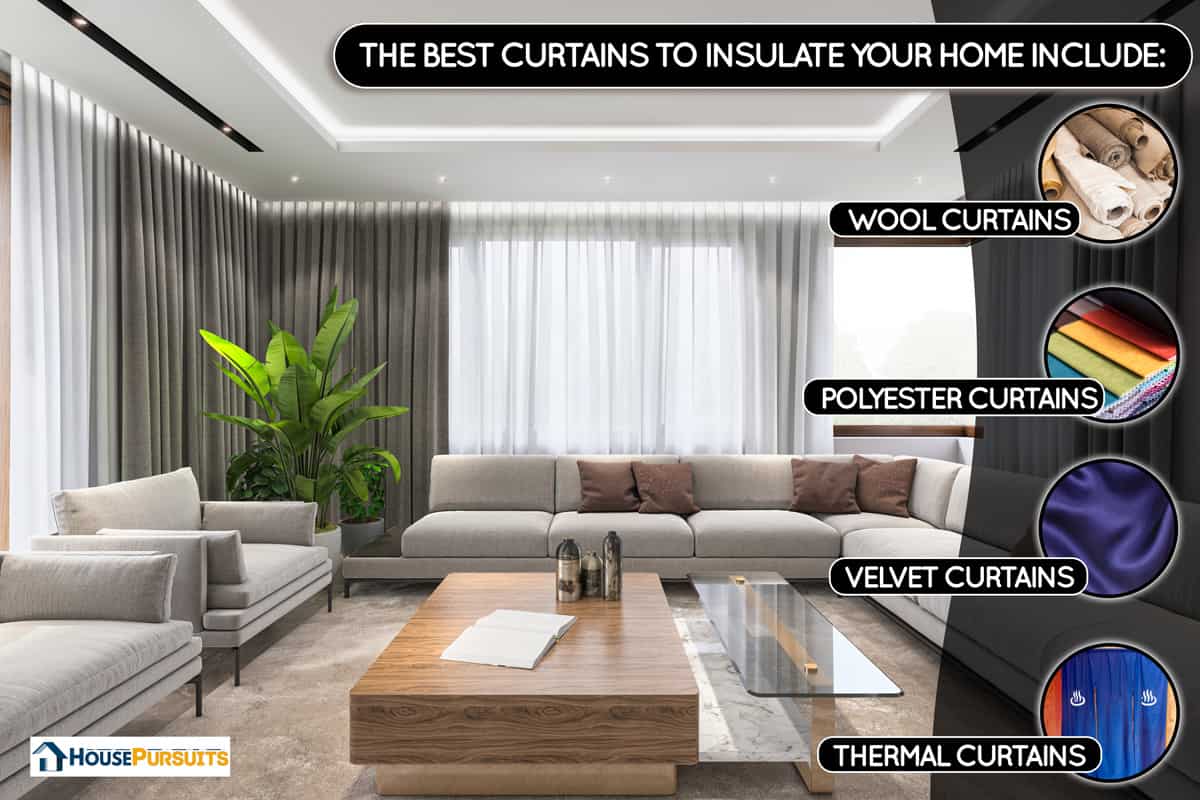
The Best Curtains For Insulation

Since windows are one of the largest avenues for temperature loss in your house, you have to pick out the right curtains for your insulation needs. You can choose from any of the following options:
Wool Curtains
Wool curtains are a type of curtain made out of hair fibers from mammalian animals, most commonly sheep. This type of fabric is also known as fleece or tweed.
Click here to see these plaid woolen window curtains on Amazon.
Pros
Wool is one of the best-known insulating materials. If you've ever worn a wool sweater during winter, you can probably attest to the warming properties of wool. That is why it's one of the best materials for curtains in the winter months.
Wool curtains can keep the cold from outside your house from entering through your windows. They have great thermal properties that stop your house from losing heat, especially during the colder months of the year.
Cons
Wool is a great material, but it's not perfect. Having woolen curtains is great for the winter but may be troublesome during the summer seasons. The thermal properties that keep your house from losing heat during winter can be a drawback when it comes to the dryer seasons of the year.
They're also notoriously difficult to wash. Wool, in heavy blends, is very absorbent to water and can get really heavy in the washer, some bends even require hand-washing. They take a fair bit of time to dry and you might have to sun dry them if they still come out wet out of the dryer.
Polyester Curtains
Polyester, the fabric, is derived from petroleum and is mostly synthetically produced. Polyester curtains are also known as microfiber or PET curtains. Higher blends of polyester curtains are used as higher-end shower curtains compared to regular plastic shower curtains.
Click here to see these polyester blend pinch pleat curtains on Amazon.
Pros
Polyester is one of the most popular materials used in curtains for a good reason. They're fairly cheap, easy to come by, and a breeze to clean.
They also make good insulators. Polyester curtains are great for keeping the heat of the summer out of your house. When it comes to keeping the cold out, polyester curtains aren't the best but they're good enough if you live in a fairly warm area where the cold seasons don't get too harsh.
Cons
Although some special blend polyesters are proven to be ignition resistant because of their built-in fire retardant properties. However, the types commonly used in curtains are known to be flammable and difficult to extinguish once in flames. This is why they're not recommended curtains for the kitchen and near the fireplace.
Velvet Curtains
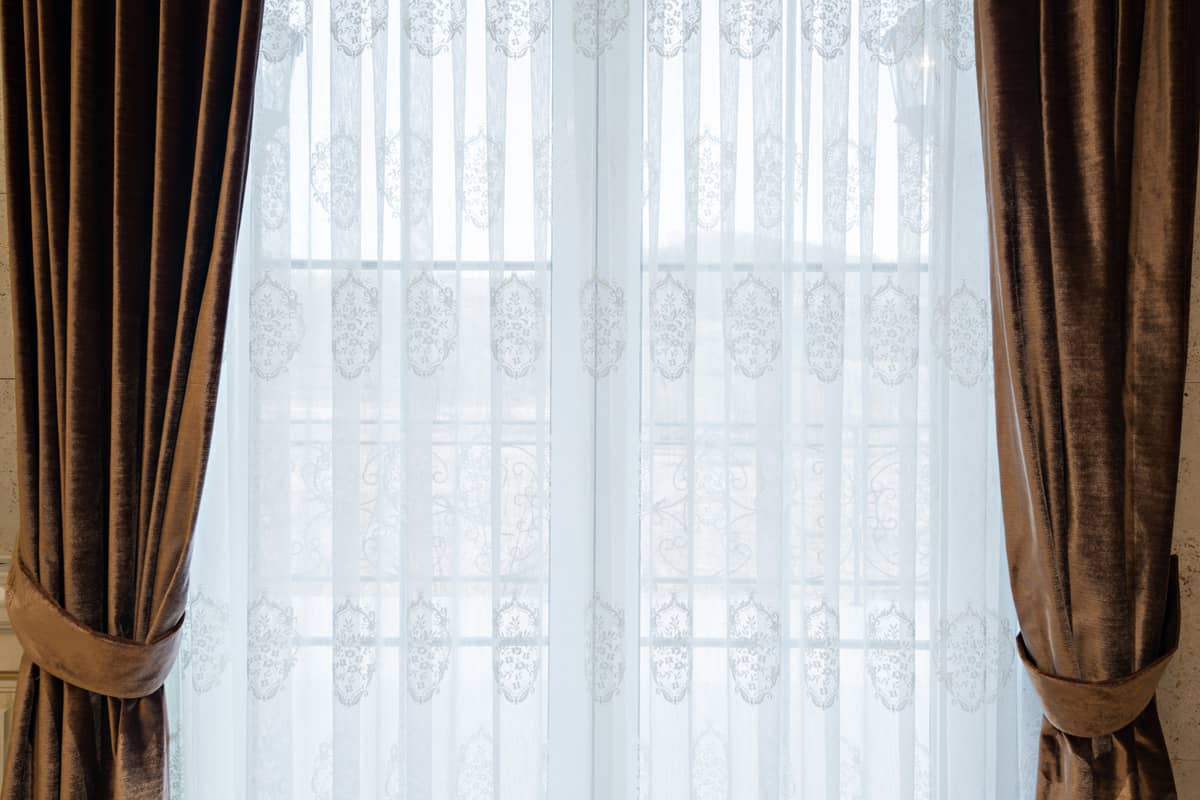
True velvet is made out of silk and weaved in a specific manner on a special loom, but cheaper velvet today can also be produced out of synthetic materials made to mimic the properties of silk. Nevertheless, velvet is still prized for its comfort, beauty, and insulating properties, especially in curtains.
Click here to see these heritage plush velvet curtains on Amazon.
Pros
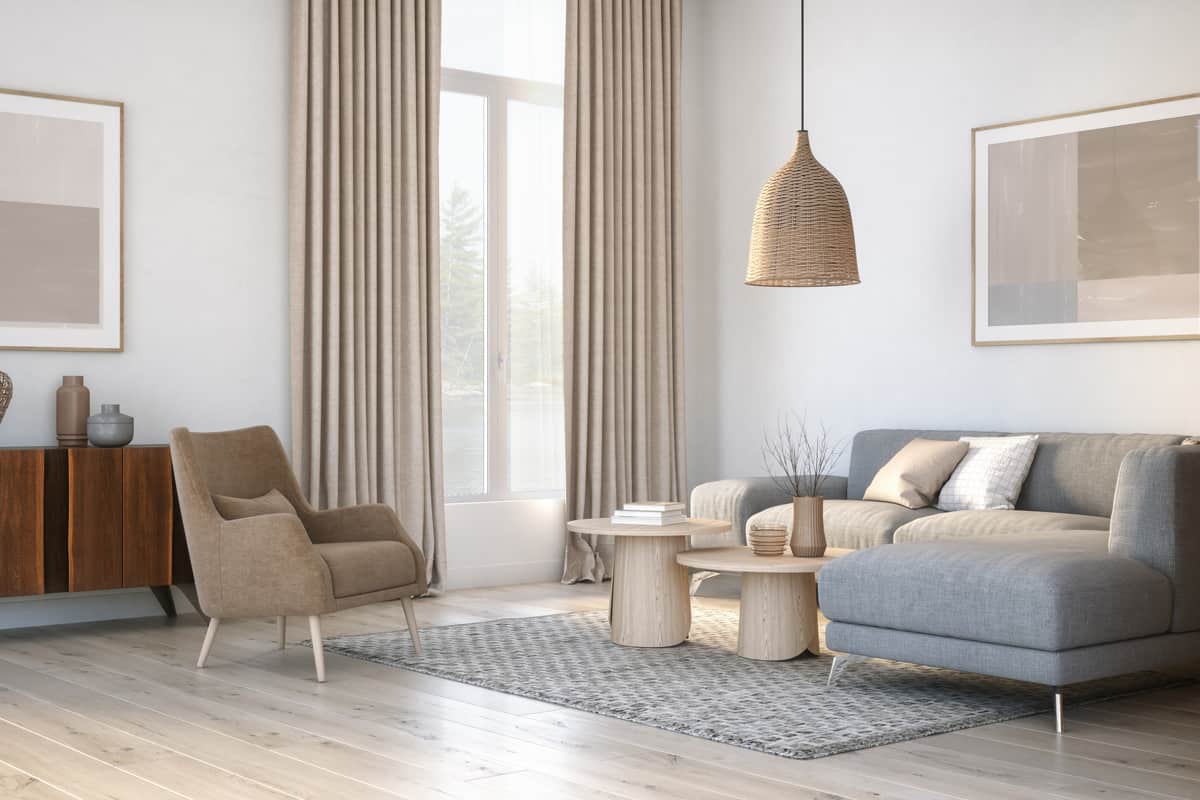
Because of its signature protruding fiber textures, velvet can give off a warm and comfortable aura in your home. It's a good insulator, not as good as wool, but it's definitely more stylish and luxurious. So if you're looking for both fashion and function, velvet curtains should be the way to go.
Velvet curtains are also more fire-resistant than other types like polyester. Thick genuine velvet isn't fire-proof but has the ability to self-extinguish so this may be a good type of curtain near the fireplace to give off that additional warm feeling.
Cons
Velvet curtains offer the same cons as wool curtains. They may not be the best curtains to have during the hotter seasons of the month, though some types of velvet, like velveteen, are incorporated in sportswear, the type of velvet that's commonly used in curtains and drapes isn't recommended for summer use.
Just like wool, velvet is also notoriously difficult to wash. Because of its thick and heavy nature, washing them with your washing machine might not be advisable. Velvet can also catch odors which is why, even though they're fairly fire-resistant, velvet curtains aren't recommended in the kitchen.
Thermal Curtains
Thermal curtains are commonly made out of decorative cotton, wool, or polyester outer lining followed by a dense foam layer, a moisture barrier, and then a reflective film layer. Some thermal curtain assemblies may also require you to modify your window frames so you'll enjoy their full insulative benefits.
Click here to see these thermal insulated blackout curtains on Amazon.
Pros
Thermal curtains have been shown to reduce the amount of heat loss in your home by up to 7 times. These curtains are specially designed to trap cold or hot air behind the fabric and reduce temperature loss. They are by far the most efficient way to insulate your windows.
They don't only keep you warm in the winter though, they can also keep you cool during the summer months. By stopping the cold air from your AC unit to seep out through your windows, they help make and keep your house or room cool for those hot summer days
Cons
One drawback of thermal curtains is that they are very hard to wash. Depending on how the curtains were made, you might have to deconstruct each layer and wash them individually or wash them all together at once, making them very heavy.
You will also almost always have to hand wash them since the insulating foam layer will have to be handled delicately.
Thermal curtains are also flammable. Because of their foam insulating layer and primarily PET materials, they are more susceptible to melting and charring than the other curtains discussed. So try to avoid using these curtains near open flames.
Are thermal curtains the same as black-out curtains?
If you've been scouring the internet to learn more about thermal curtains, you might come across sites or product listings interchanging thermal curtains and black-out curtains. We're here to set things straight and tell you that they aren't the same.
A black-out curtain's main purpose is to, as the name suggests, black a room out. It does this by reducing the amount of light that passes through your window using thick and tightly woven fabric.
Thermal curtains, on the other hand, are primarily used to keep the cold or hot air from the outside from entering your house, while also keeping the cold/hot air your HVAC unit makes inside your house. Though the thick fabric and multiple layers may have the side-effect of reducing the amount of light entering through your window like black-out curtains.

Here's an example of a black-out curtain that reduces the light entering the room, but with relatively fewer layers compared to thermal curtains. You can imagine that these curtains won't be very good for insulation.
In Closing
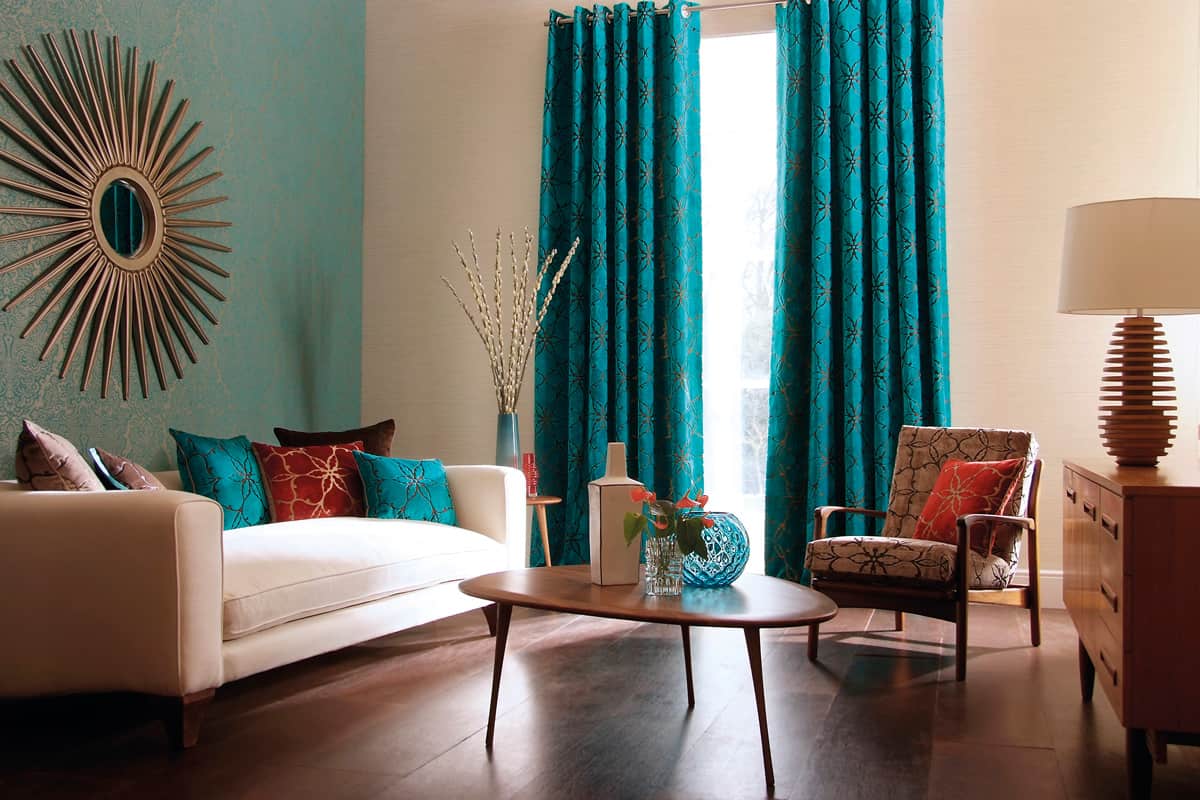
The best curtains for insulation are wool, polyester, velvet, and thermal. It's important to remember that when choosing the best curtains for insulation, you will need to consider a few factors like what the climate is from where you are, what part of the room you'd hang them, and of course, your aesthetic taste.
Learn more about curtains by checking out these other posts:





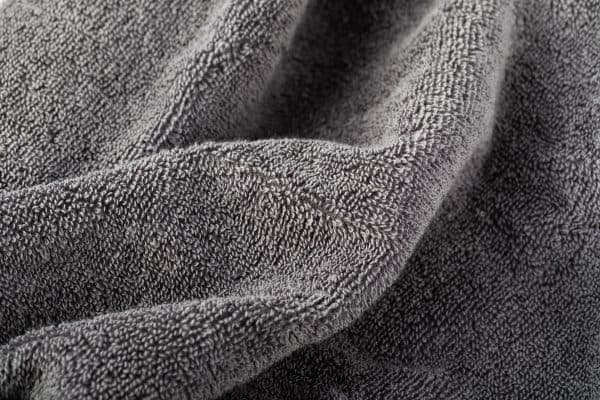
![living area in luxury apartment with a comfy sofa seats by the window, layered curtains, black out and sheer curtains, marble floor with space for household products display., Can Sheer Curtains Be Dyed [And How To]?](https://housepursuits.com/wp-content/uploads/2022/09/3D-REN1-1-600x400.jpg)
